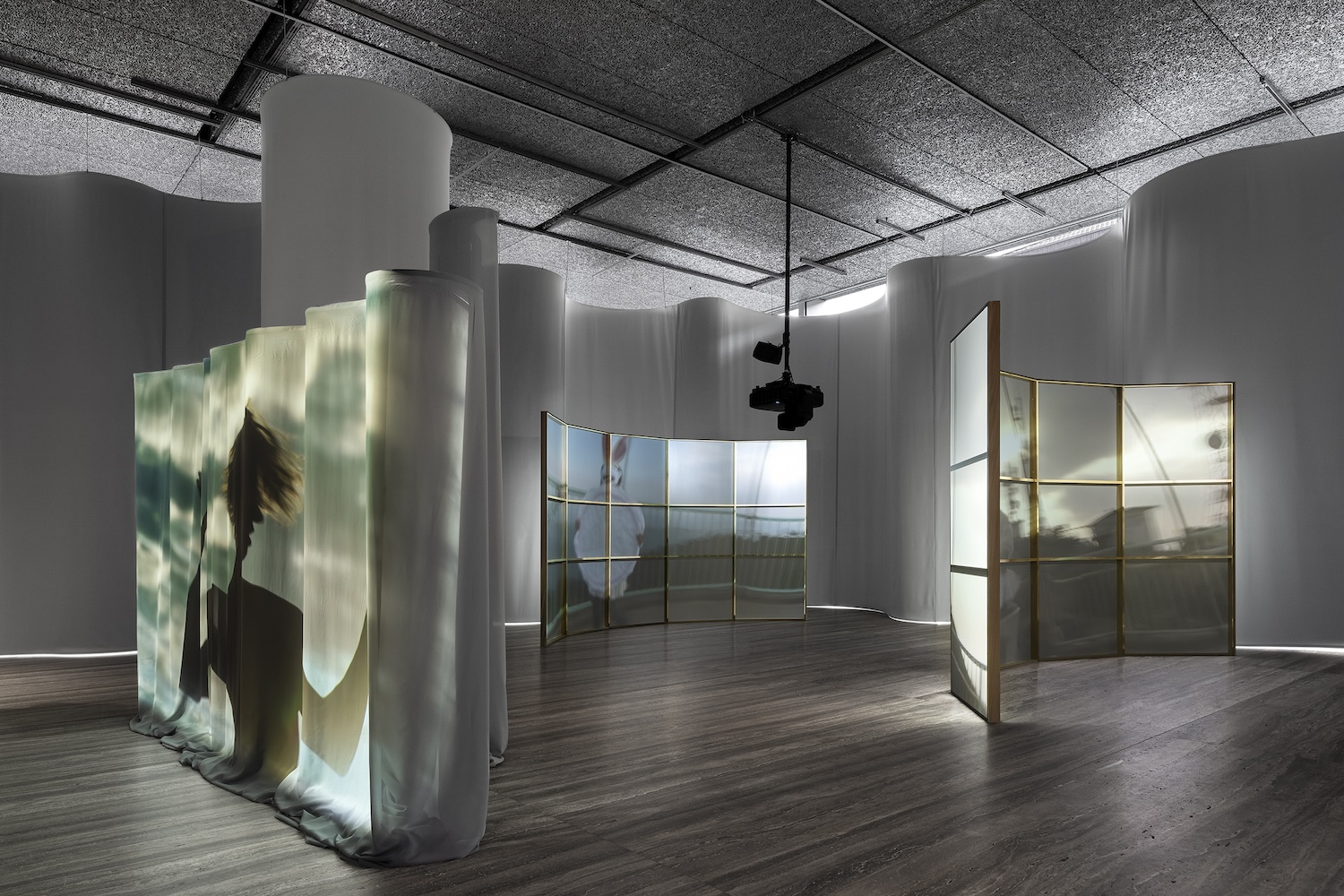“PARAVENTI”: BETWEEN DICHOTOMIES
Credits
WORDS Charlotte Di QualIMAGES Fondazione Prada
Unveiling the profound ambiguity of an intriguing and ever-lasting object through “Paraventi: Folding Screens from the 17th to 21st Centuries”, curated by Nicholas Cullinan at Fondazione Prada in Milan.
Derived from the Latin words ‘para’ (to shield) and ‘vento’ (wind), the paravent seems, at first glance, a simple protective object. Yet, when considering the synonym “folding screen”, its intricate nature unfolds. As a screen, the paravent evokes both the physical and metaphorical aspects of concealment and revelation – an intrinsic ambivalence widely explored in the exhibition. The folding screen both conceals and reveals, veils and unveils, hides while showing and shows while hiding.
The elusive nature of this enigmatic object defies easy categorization, as eloquently highlighted by Nicholas Cullinan, curator of “Paraventi” and director of the National Portrait Gallery London. Cullinan’s opening questions of the exhibition text set the stage for an exploration into the liminal identity of the folding screen: “Either/or, neither/nor: painting or sculpture? Art or furniture? Utilitarian or ornamental? Prop or performative device? Decorative, functional, architectural or theatrical?”.
“Paraventi” represents the culmination of extensive research, aiming to unravel the complex historical and semantic dimensions of the folding screen. The exhibition in Milan, that coincides with two additional showcases in Shanghai and Tokyo, is set within the Fondazione Prada’s Podium, featuring over 70 folding screens across two floors. The display spans ancient Chinese and Japanese screens from the 17th to the 19th centuries, to experimentations of the artistic avant-gardes and to the folding screens specifically conceived by contemporary artists, such as Tony Cokes, Cao Fei, Wade Guyton, Anthea Hamilton, William Kentridge, Shuang Li, Goshka Macuga, Kerry James Marshall, Chris Ofili, Laura Owens, Betye Saar, Tiffany Sia, John Stezaker, Keiichi Tanaami, Wu Tsang, Luc Tuymans, and Francesco Vezzoli. This curated journey offers a profound exploration of the folding screen’s evolution through a visual cartography of the encounters between East and West, various artistic disciplines, and designers and artists. The exhibition sheds profound light on how the folding screen embodies diverse times, places, cultures, artistic genres, functions, and meanings.
On the Podium’s ground floor, the screens unfold within a sinuous display designed by the architecture studio SANAA, mirroring the fluidity and conceptual versatility of the folding screen across continents and epochs. Plexiglass walls and soft curtains create a curvilinear labyrinth of contiguous rooms. The installation invites visitors to experience the space freely and dynamically, sparking curiosity and encouraging a haptic-optical exploration.
The serpentine sections present seven distinct themes. “Readings, East and West” explores the reading sense of folding screens, emphasizing the complex history of migration and translation. “Public/Private” delves into the erotic nature and sexual connotation of the folding screens’ function to create spaces of intimacy, mirrored by the pervasive ubiquity of the transparent walls and curtains that places the space on the threshold between privacy and public. “Split Screens” examines the pervasive influence of screens that continue to perpetuate the dialectic between revelation and concealment in the digital era. From movies and television to computers and portable devices, screens shape our reality as much as the content they contain. “Four Seasons: Space and Time, Figuration and Abstraction” explores how screens’ physical structure allows the narrative – whether figurative or abstract – to unfold sequentially in space and time, much akin to the cinematic screen. This section thus seems to highlight the para-cinematographic nature of the folding screen, suggesting that it transforms the visitor into a cinematographic voyeur. Lastly, the sections “Propaganda,” “World of Interiors,” and “Parody/Paradox” explore the paravent’s political potential, the subversiveness of queer aesthetics challenging the conventional understanding of what is deemed decorative, and humorous and parodical contradictions, respectively. Together, these sections contribute distinct layers to the rich identity of the folding screen, unveiling its inherent dichotomies.
In contrast to the synchronic approach on the ground floor, Podium +1’s chronological organization in the section “Either/Or/Neither/Nor” follows the flow of history through a physical line. Here, visitors encounter antique Chinese and Japanese folding screens; creations by renowned designers and architects, such as Alvar Aalto, Charles and Ray Eames, Le Corbusier, Josef Hoffmann, Jean Prouvé; experiments by Giacomo Balla, René Magritte, Pablo Picasso; as well as a sequence of works by contemporaries, including Marlene Dumas, Mona Hatoum, Yves Klein, Sol LeWitt, Keiichi Tanaami, Cy Twombly, and Luc Tuymans, Kamrooz Aram, Atelier E.B (Beca Lipscombe & Lucy McKenzie), and Małgorzata Mirga-Tas.
“Paraventi – Folding Screens from the 17th to 21st Centuries” is an indispensable exhibition, open until February 22, 2024, at Fondazione Prada in Milan. Don’t miss the chance to walk on the boundary between different disciplines, cultures, centuries and to investigate the endless images hidden and shown by this enigmatic ever-present object.






